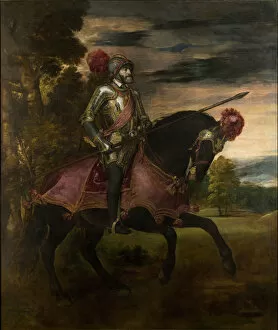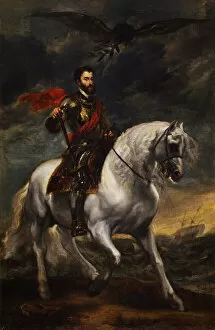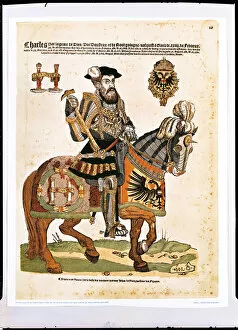Charles I Of Spain Collection (#3)
"Charles I of Spain: The Emperor Who Shaped History" Emperor Charles V, also known as Charles I of Spain, was a prominent figure in European history
For sale as Licensed Images
Choose your image, Select your licence and Download the media
"Charles I of Spain: The Emperor Who Shaped History" Emperor Charles V, also known as Charles I of Spain, was a prominent figure in European history. Born in 1500, he inherited an empire that spanned across Europe and the Americas. His reign witnessed significant events that shaped the course of history. One notable event was his encounter with Martin Luther at the Diet of Worms in 1521. This meeting marked a turning point in the Protestant Reformation and showcased Charles' determination to uphold Catholicism. Throughout his rule, Charles maintained close ties with influential families like the Fuggers, as depicted in a painting from Augsburg in 1530. These connections allowed him to finance his ambitious endeavors and solidify his power. In addition to political affairs, Charles valued diplomacy and correspondence. A letter from him to Queen Mary of England in 1555 exemplifies his efforts to maintain alliances and foster international relations. Artists captured Charles' regal persona through various portraits over time. One such portrait by Lucas Vorsterman showcases his commanding presence during the early seventeenth century. Furthermore, historical plates depict key moments from Charles' life. Plate 19 portrays a triumphal arch celebrating Ferdinand's ascent into power while Plate 22 depicts Charles' victorious campaign at Pavia against Francis I of France. Plate 23 highlights another military achievement - his campaign in Africa. The procession of Counts and Countess on Horseback painting reflects important marriages within European royalty during this period – including Mary of Burgundy's union with Maximilian – which further strengthened imperial ties under Charles' rule. Hans Baldung's "Libertas Germaniae" is an iconic artwork symbolizing how Emperor Charles V embodied freedom for Germany amidst political challenges faced by regional states during this era. This diverse collection of artworks demonstrates how artists sought to immortalize Emperor Charles V throughout different stages of his life – whether it be capturing him facing right in a portrait or showcasing his imperial grandeur.















